A false neap tide will doom your fishing trip! Worse yet, tide apps cannot predict it, but this blog post will arm you with the knowledge you need to detect it and plan accordingly.
In yesterday's blog post I covered exactly what a "false" neap tide is.
This time I'm detailing how to predict it, since all weather and tide apps cannot.
Disclaimer
Louisiana Fishing Blog isn't about knot-tying videos, ambiguous lure reviews or generic bullsh*t that doesn't catch fish.
The information in this article is the real deal and an advanced understanding of conditions that only the most accomplished anglers possess.
Keep reading to take your game to the next level!
Predict False Neap Tides
We'll knock out the "easy" false neap tides (FNT) first.
These are the kind caused by strong winds canceling out a tide.
Example 1 - 9/2/2018
This is a sudden 20 knot south wind killing a 1.6 foot falling tide.
Wind Velocity
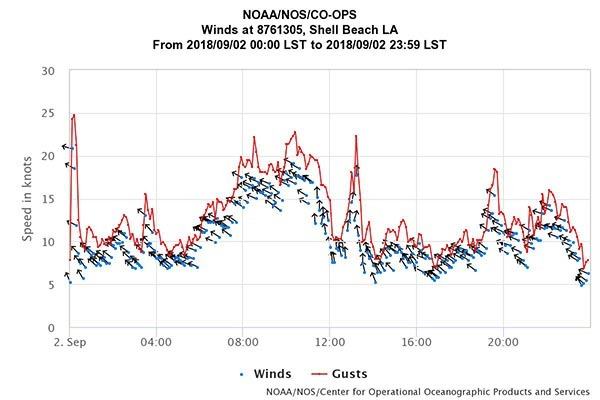
Tap to Enlarge
Water Levels
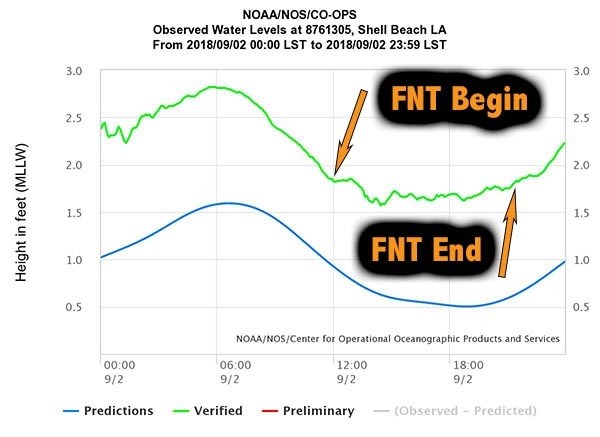
Tap to Enlarge
Example 2 - 11/12/28
Here's another case of east winds stalling a falling tide.
Wind Velocity
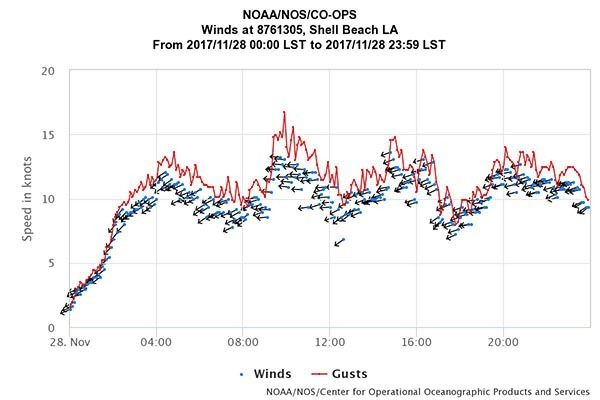
Tap to Enlarge
Water Levels
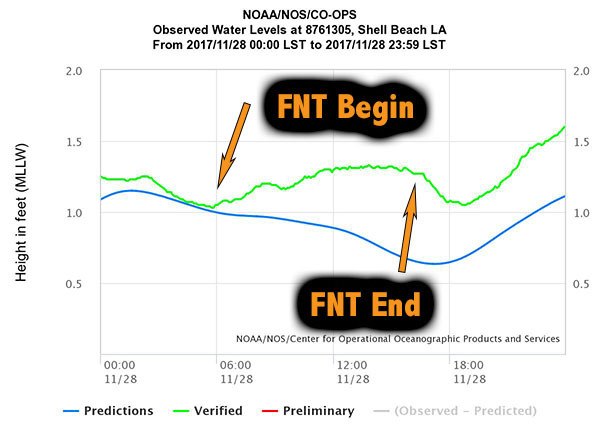
Tap to Enlarge
Not making any sense?
Maybe you're not familiar with the National Data Buoy Center, their weather stations and how to access and read their data to monitor real-time conditions in the marsh.
Now For The Hard Stuff
The FNT's we just covered are easy to spot.
All you need to do is compare the forecasted wind against the predicted tide.
For more details on how to do this, you should really read Mastering The Tide.
But now it's time to jump into the FNT that got me last Friday and, in order to do that, I must tell you about Thursday's fishing trip.
First Day of Speckled Trout Fishing
These were the conditions we faced on Thursday, November 15th, 2018:
Wind Velocity
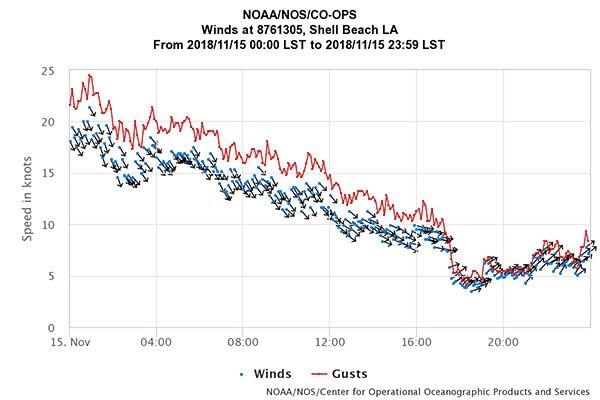
Tap to Enlarge
Water Levels
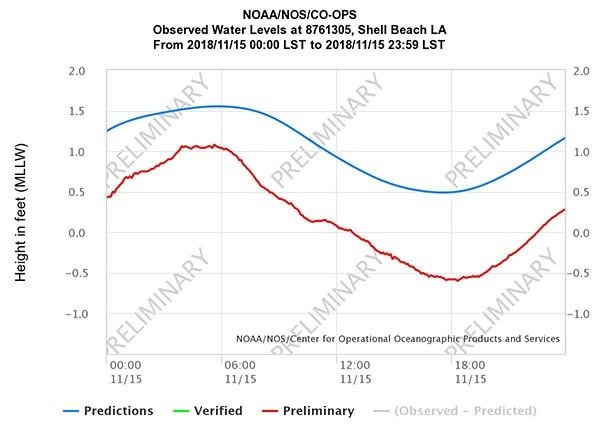
Tap to Enlarge
As you can see, the water dropped like a rock.
The predicted falling tide combined with that strong northwest wind caused the water to drop 1.5 feet, way past the ~1 foot prediction.
In fact, the water was already fairly low, given the northwest wind had been blowing for a few days.
Needless to say, we had no problem catching our limit of 50 speckled trout.
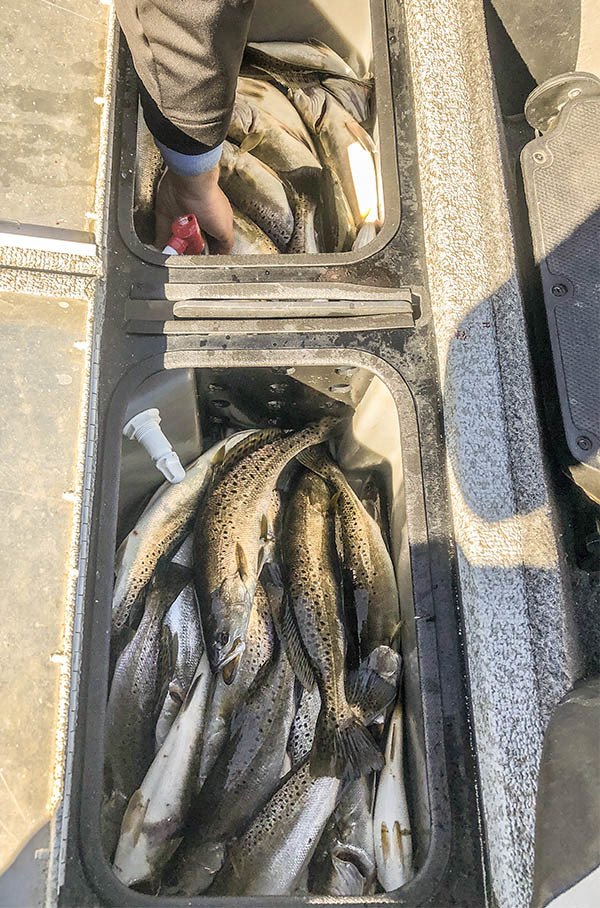
That's Day One in a nutshell. Day Two was a different animal.
Second Day of Speckled Trout Fishing
The conditions were different this time, with the falling tide being slightly weaker and wind not blowing at all.
Wind Velocity
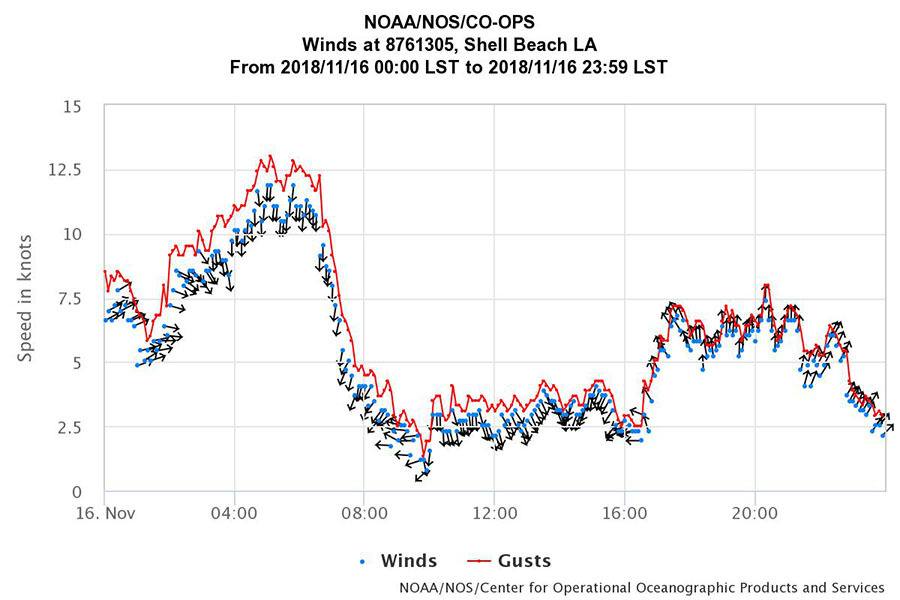
Click to Enlarge
Water Levels
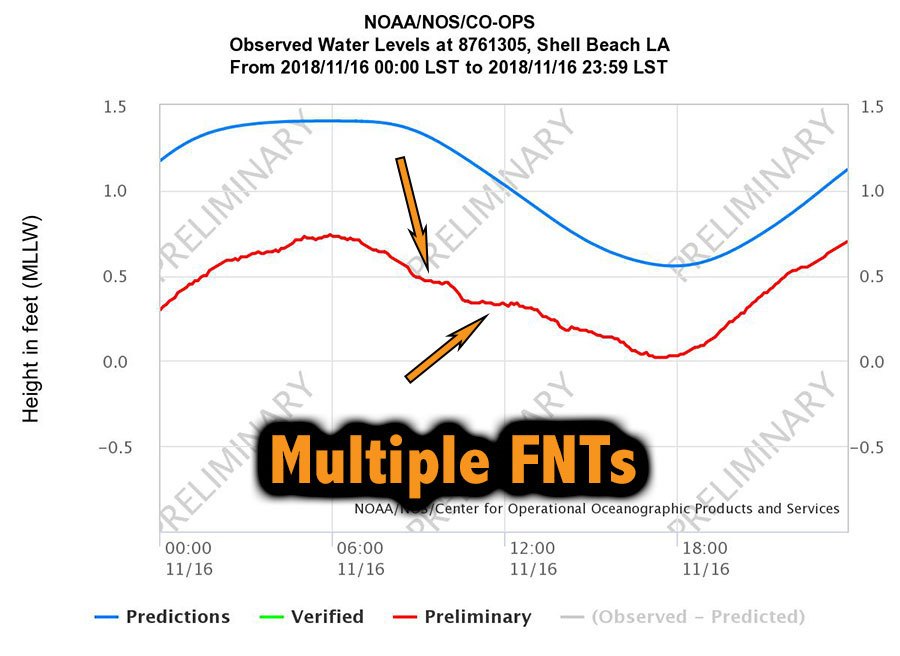
Click to Enlarge
That may not look like much to you, so here's water levels from the USGS Bay Gardene station. (The graphs above come from NDBC's Shell Beach Buoy).
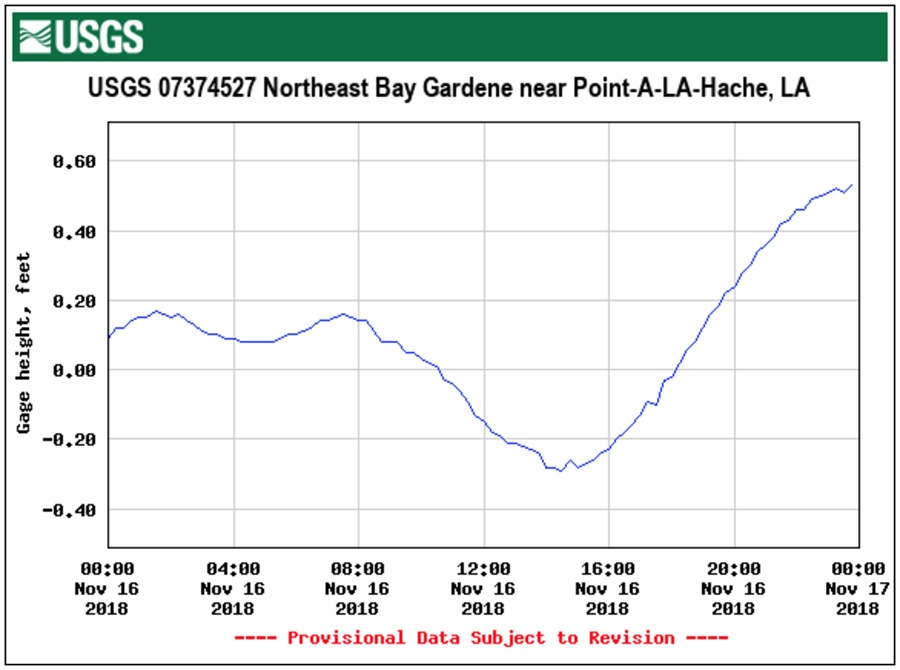
Click to Enlarge
Now compare this data against the predicted tide for that same station.
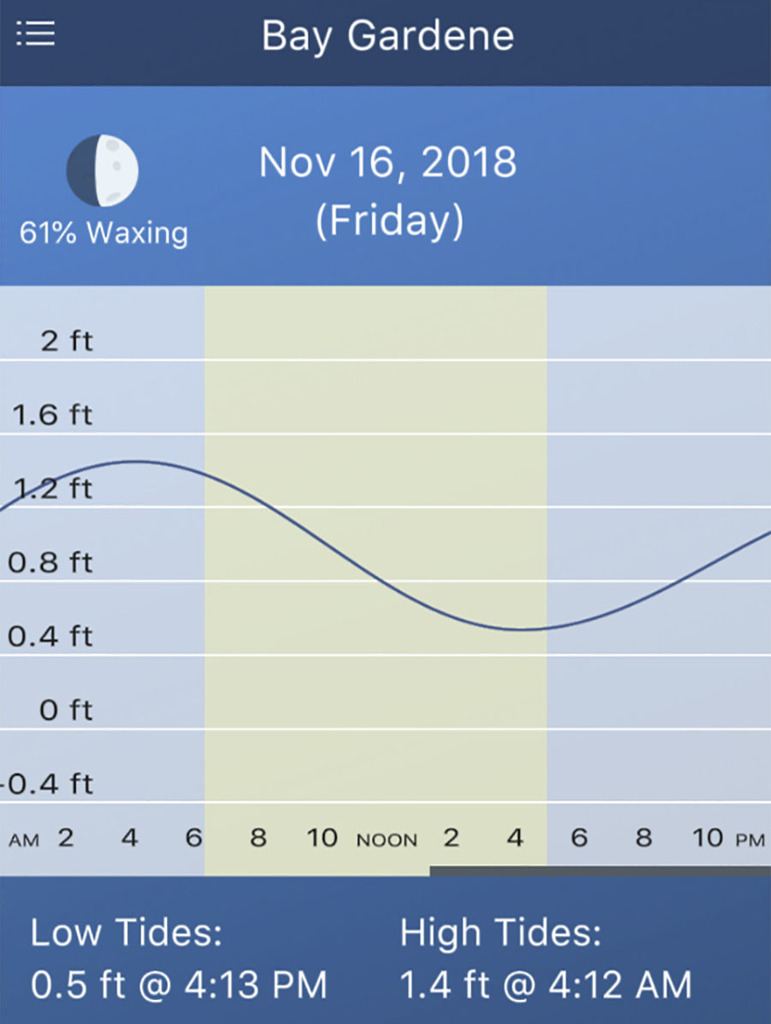
Click to Enlarge
We had launched out of Delacroix and expected to smash fish on the falling tide, but the tide never fell that morning.
It was confusing because at first the tide seemed to fall, then it seemed to come in, then went completely flat.
We ran farther south towards Pointe a la Hache to where I thought water would move first.
But crab traps along the way didn't indicate any water movement.
If they had, they'd be leaned over like in the photo below.
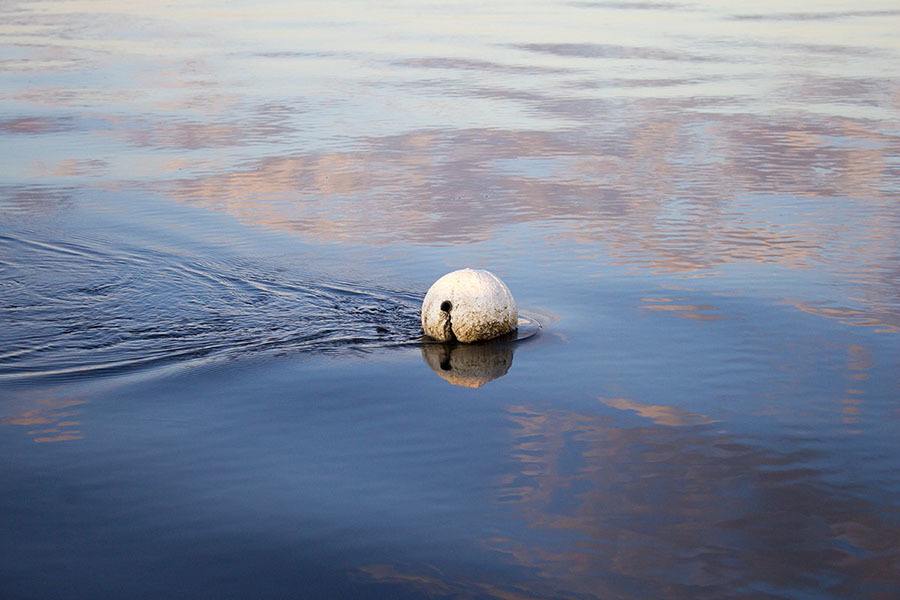
Crab traps are great indicators of what the tide is doing. Watch them as you run through the marsh.
It became obvious what was going on, and I figured trying my luck in Hopedale would be worth a shot.
So we made the run, but it proved to be a horrible roll of the dice.
We missed the falling water that eventually happened on the Bay Gardene tide table and hopped onto another FNT at Hopedale.
By noon I called it quits, needing to go home and prep the boat for another trip.
Our catch: three speckled trout and a pompano (he was lost).
So What Happened?
Water levels got a nasty "one-two punch" from the wind.
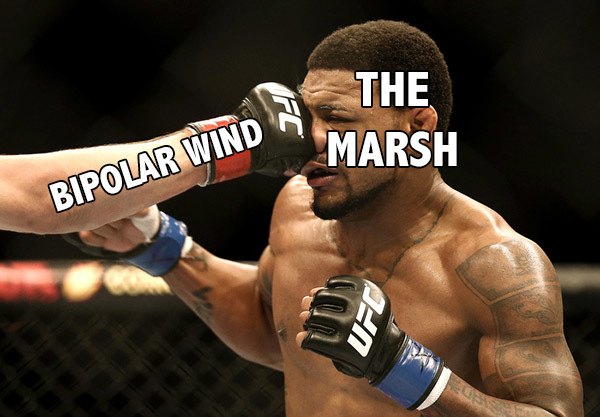
Let me explain.
First Punch
The first punch came in the form of strong northwest winds.
They dropped water levels, which is fine, because so long as those winds keep blowing at a constant the marsh (and water levels) will adjust accordingly.
For the most part, the tide will still do its thing.
Second Punch
The wind didn't slowly let up and allow the marsh to adjust, it straight quit blowing.
This left only the tide to influence water levels, and on the morning of the 16th the "high tide" was already at its predicted low tide.
How could it possibly fall?
Yes, gravitational pull from the sun and moon still did its thing, but to a smaller degree that left inshore anglers scratching their heads.
Take a look, you'll see that the incoming tide was stronger than predicted and the falling tide weaker.
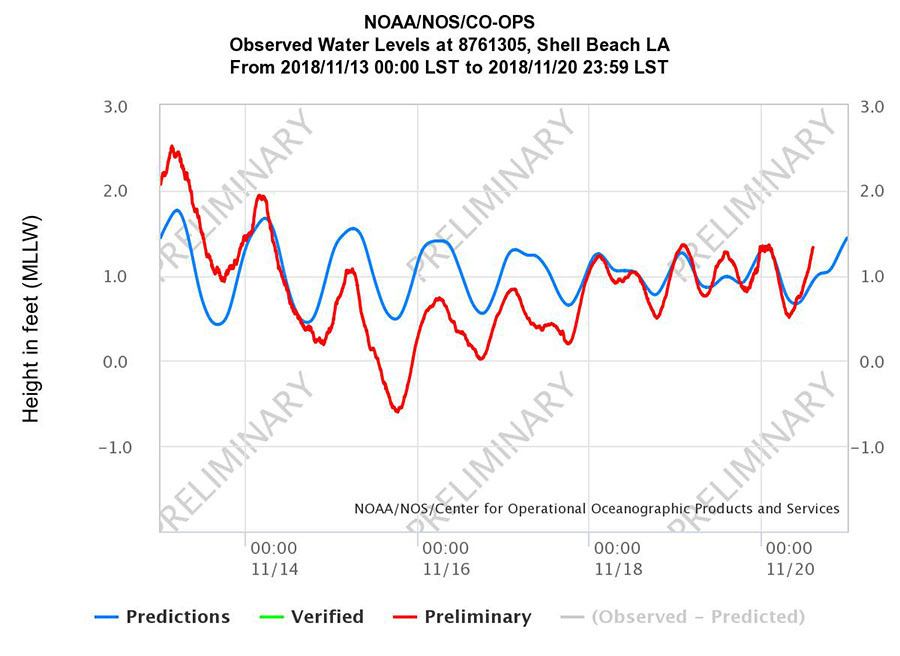
Click to Enlarge
That is, until water levels recovered to what they are today (11-20-18).
Did anyone catch fish at all?
Of course! It's almost a law of fishing that somebody, somewhere will always catch a better box than you.
I know for a fact people caught limits of speckled trout on the 16th (and where).
Those fish were on a deep, still water pattern that doesn't require much of a tide.
In all fairness, it's the pattern I wanted to fish since I caught a limit on it the day before.
However, my buddies got a camp in Delacroix and wanted to fish a more conventional pattern that would've required the water to drop as predicted.
Conclusion
The most important aspect of a fishing trip is the planning phase, and part of that is looking at the predicted conditions so you know where to go and what to do.
Yes, there are apps for this, but they only provide predicted data and don't factor in every condition.
They don't have a snowball's chance in Hell to predict false neap tides.
So it's important you look at the big picture, and factor in all the conditions to make the best decision possible.
Your ability to do this will improve with time on water, but since you read this blog post your understanding of the marsh and how its influenced is years ahead of those missing this knowledge.
Tight lines, y'all!








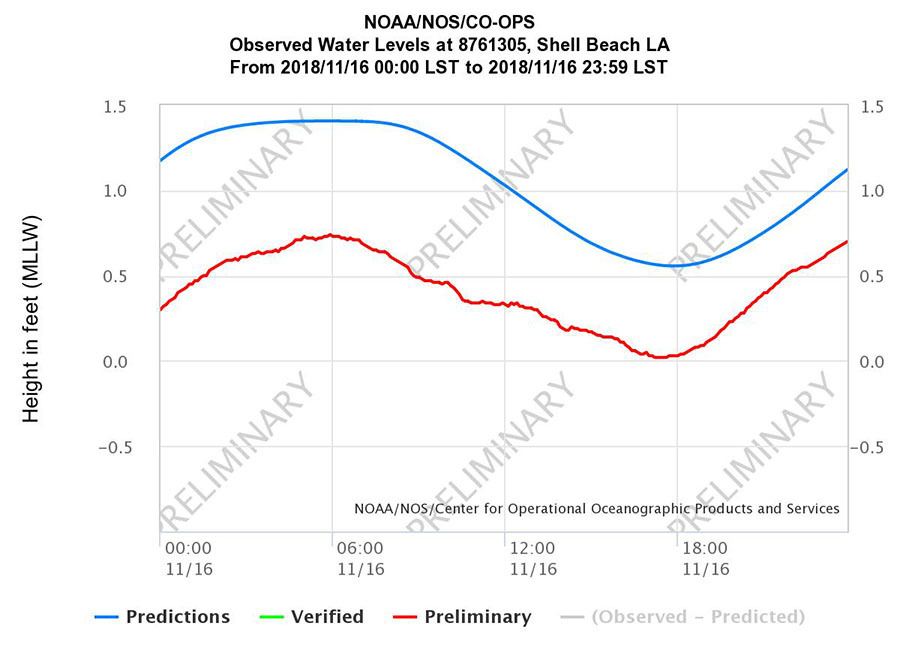

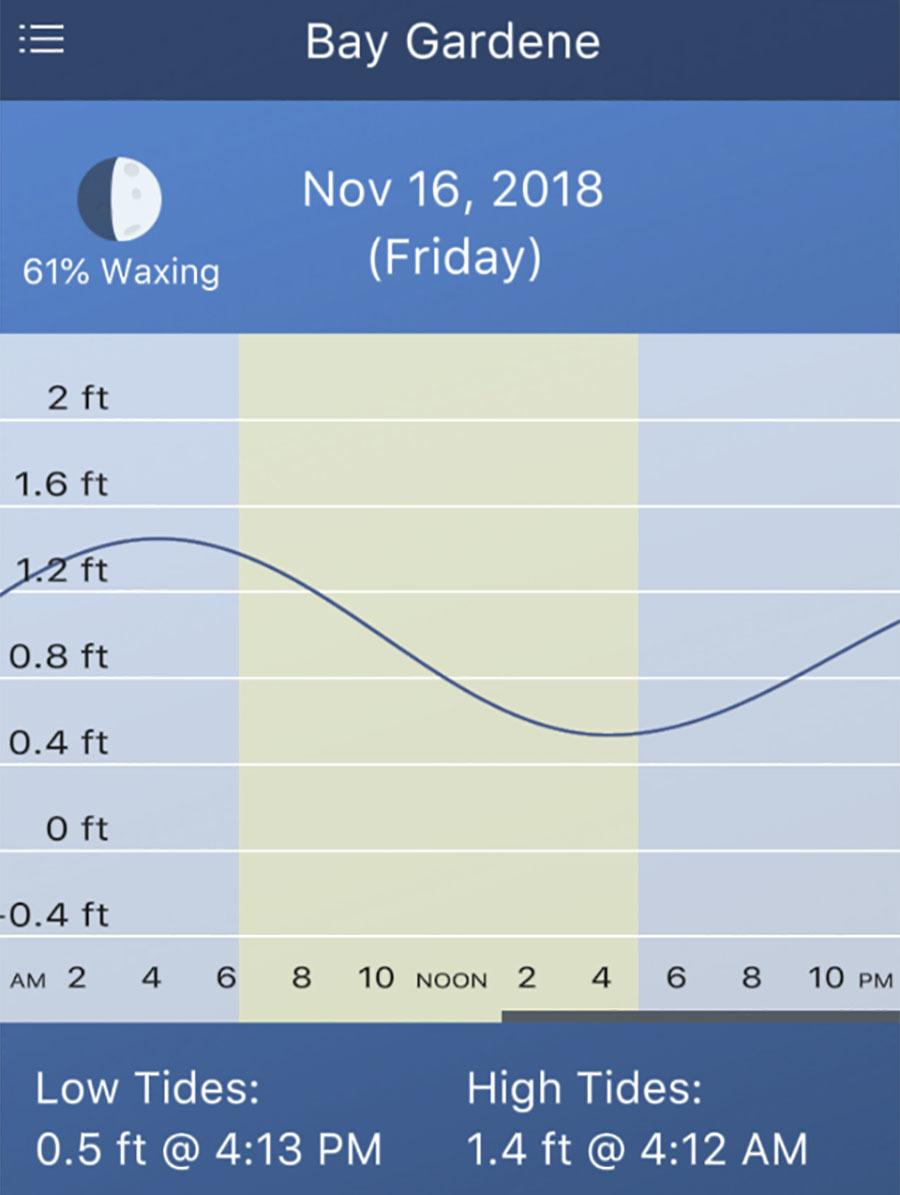

Thank you, Jennifer!
This is such an informative post. Thanks a lot for sharing, I learned a lot about false neap fishing. I’m gonna share this with my friends.
Excellent, thanks for commenting!
Deep still water only works if it’s ridiculously cold.
So, I have bad news for you: your fishing trip is screwed. Tough luck.
But you can try grinding out shorelines for redfish, since they don’t really need a tide as much as speckled trout do.
Besides, if an FNT wasn’t such a bad thing and easily overcame, I wouldn’t have written this long and detailed article about it.
Thanks. So I think I know the answer, but what should you do if this is your only day to fish? If you get out there and find yourself in this situation of a false neap tide, water isn’t moving when it was supposed to, and the fish just aren’t eating, it’s probably time to hit that deep still water, and if that fails it’s time for plan redfish after?
And assuming you are able to predict the false neap tide during planning you just go strait to the deeper still water 1st.
I’m not familiar with your waters too much (beyond what I’ve seen in lafb elite), but was the trip to hopdale to find deeper still water, or the hope was the water was moving there?
Good notes Capt. D. I always use that wind factor on the tides when planning a trip. Especially when we are in minimal differentials on tidal flow. That wind will affect the flow for sure and will turn what you think will happen into something different. For good and for bad…so one MUST factor the wind effects into the game plan ALWAYS. Especially winter low tides with that north wind…..for obvious reasons.
Tight lines
Great question.
No, FNT’s like the one that got me do not occur regularly after cold fronts and are not part of the cycle.
They’re a byproduct of whatever weather was dominating the Gulf Coast.
It’s a general rule of thumb that if water isn’t moving, trout aren’t feeding.
I’ve literally seen trout hanging out on the bottom and they wouldn’t bite anything I tossed at them.
It was obvious they were there when I snagged them in the tail and flipped ’em into the boat.
I have a theory that trout seeking shelter in really deep water (like 30ft+) recover faster from dropping water temps, so it’s possible to catch them on a deep, still water pattern whereas trout in shallower water in the marsh don’t have that luxury.
It’s the only explanation that has matched everything I’ve observed, and it could be wrong.
Good articles. Do you think the false neap tide is a likely pattern after a strong cold front, and is the reason there is the “sage” fishing advise not to fish a few days after a cold front? I’d guess the real issue is not that the fish went away, it’s the people didn’t adapt to fish the false neap tide / colder post front water while the marsh is recovering it’s water levels.